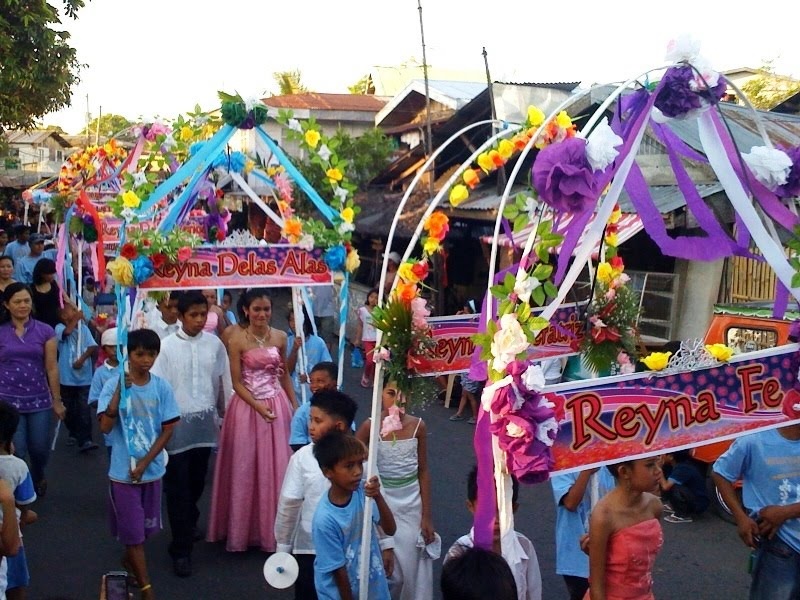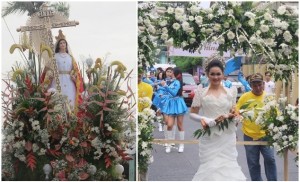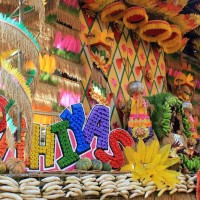
The merry month of May is when Flores de Mayo is celebrated by the Filipino communities throughout the country. Flores de Mayo is a celebration in honor of the Blessed Virgin Mary, and for the religious Philippines, this is a tradition that cannot be easily erased from the calendar amidst the radical changes in cultural orientation of the new generation.
Flores de Mayo is believed to have originated in the mid-1800s when the Vatican proclaimed doctrines about the Immaculate Conception. The festivity is sometimes called Flores de Maria which means Flowers of Mary, where Flores de Mayo means Flowers of May. This celebration may have been extracted from the publication circa 1867 of Mariano Sevilla’s translation of the devotional Flores de Maria where flowers are offered to the Blessed Virgin. This tradition is said to have been introduced by the Spaniards to the Philippines.
 Every day for the entire month of May is dedicated to the Blessed Virgin Mary. Children and young adults with cut flowers and basket of petals in hand, march down the center aisle of the church or chapel, offering the flowers to the image of the Blessed Virgin near the altar. Hymns to the Virgin Mary are sung throughout the offering while novena prayers are said before the floral offering.
Every day for the entire month of May is dedicated to the Blessed Virgin Mary. Children and young adults with cut flowers and basket of petals in hand, march down the center aisle of the church or chapel, offering the flowers to the image of the Blessed Virgin near the altar. Hymns to the Virgin Mary are sung throughout the offering while novena prayers are said before the floral offering.
As a highlight of the celebration of Flores de Mayo, a religious festivity called the Santacruzan is celebrated in honor of St. Helena, the mother of Constantine the Great – the first Christian emperor, who found the relics of the True Cross or Holy Cross. The story goes to say that around 300 years after the death of Jesus Christ, Queen Helena was in search of the True Cross of Jesus. At the Calvary, she found 3 crosses, when she was 75 years old. She asked her sick servants to touch each cross and one of the three crosses she found, had caused the miraculous healing of the sick servants. That cross was believed to be the same cross where Jesus Christ died.
The Santacruzan starts with a novena to the Blessed Virgin Mary, with the rosary prayer being offered every day. After the novena, a procession will follow which will culminate on the ninth day, the highlight of the festivity. The Santacruzan procession is joined in by beautiful ladies with their escorts with embellished floats and ornate gowns, representing various religious characters. Despite the changing cultural and religious orientation, many communities maintain the Santacruzan as an expression of prayer and faith and the gift of the Holy Cross.






